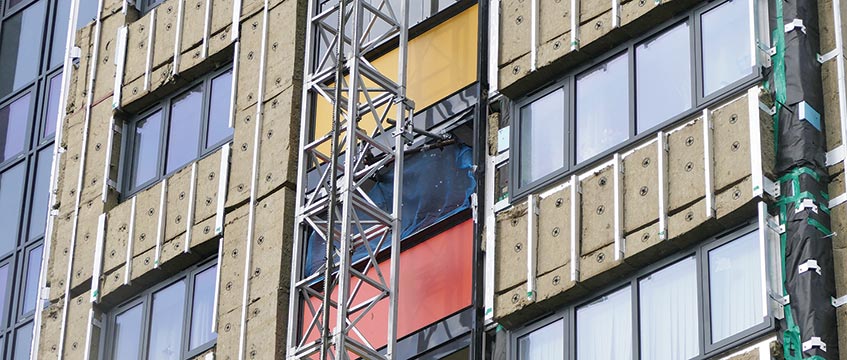Difficulties with insurers are delaying repairs, and sending costs spiralling, writes Ellodie Gibbons.
At a recent meeting of the All-Party Parliamentary Group on Leasehold and Commonhold Reform (APPG), leaseholders from around the country shared difficulties they are currently facing living in buildings with cladding.
Having already been told their properties are worthless and that they have to pay through their service charges for “waking watches”, these leaseholders are now facing exponential rises in the amount they need to contribute towards insuring their buildings, with some reporting premiums rising tenfold from £20,000 to £200,000.
Indeed, in the Royal Borough of Kensington and Chelsea, where Grenfell Tower is situated, the building insurance premium in respect of the council’s residential leasehold properties within the borough (exclusive of Insurance Premium Tax) rose by 86%, from £724,107 for 2017-18 to £1,346,726 for 2018-19.
In a hearing before the First-tier Tribunal last month (Royal Borough of Kensington and Chelsea v Multiple leaseholders LON/00AW/LSC/2018/0465), the council explained that, of that increase, 40.4% was a direct result of claims relating to the leasehold flats within Grenfell Tower; 31.99% was the result of the sums insured under the policy being increased; and 13.6% was the result of general increases in the costs of building insurance, particularly in central London.
While the council had taken a decision not to recharge the 40.4% increase, all other increases were being recharged under the service charge provisions in its leaseholders’ leases.
Insurance policy limits
The attitude of insurers, the APPG meeting highlighted, was at the same time contributing to the difficulty in resolving cladding issues. Leaseholders reported not being able to appoint managing agents or building surveyors (so as to identify the nature of the cladding used on their buildings) because of the limits on the professional indemnity insurance of those professionals. More fundamentally, those providing insurance guaranteeing the construction of a building have shown a distinct reluctance to meet claims for the cost of rectifying construction defects.
In the recent case of Manchikalapati and others v Zurich Insurance plc (t/a Zurich Building Guarantee & Zurich Municipal) and East West Insurance Company Ltd [2019] EWCA Civ 2163, the defendant insurers argued that a maximum liability cap in a new build insurance policy was limited to the combined value of the flats of the leaseholders who had claimed under the policy, rather than the total value of all flats in the development. The number of leaseholders able to make a claim was limited because the majority of the flats in the development were owned by persons connected to the original developer, which was responsible for the defects. The insurers also argued that:
1. The policy did not respond where the cost of rectification had not been incurred;
2. The policy did not respond where the proceeds of the claim would not be used to fund remedial works;
3. The policy shut out the claimants’ claims because they had rights against the landlord and others;
4. The basement was not within the policy cover;
5. The balconies were not within the policy cover;
6. Damage caused by condensation was not within the policy cover; and
7. The first instance judge had erred in his application of the excess provisions.
In finding for the leaseholders on all grounds, the Court of Appeal held that it was a case of real doubt and therefore that the maximum liability cap should be construed in a manner consistent with, not repugnant to, the purpose of the insurance contract.
In relation to the other provisions of the policy, Coulson LJ observed that: “If it is said by an insurer that, as a matter of interpretation, a policy ostensibly designed to respond to the very events which have in fact occurred somehow does not respond at all, then that may indicate that the interpretation being urged on the court is not in accordance with its natural language.
“In my view, that is the case here. What ZIP suggest as the proper interpretation of the words used in their own policy is, on analysis, nothing of the kind, and is instead a strained and artificial construction (often requiring the interpolation of words not present) with the result that it becomes impossible to see any circumstances in which ZIP would ever pay out under the terms of the policy.”
He went on to hold that it was in accordance with the general principle of insurance law that the insured could do what he liked with insurance money and that “some other form of compensation or damages” had to denote an entitlement which was substantially the same as the right conferred by “another insurance policy”, not simply the possible existence of a potential claim in tort against a third party.
Ground rent investors
In Sethi and others v Islington Court Management Company Ltd (LON/00AU/LSC/2018/0318), a case concerning St Williams Court, a development in London N1, the FTT heard how the insurers of the development and the “Premier Guarantee” for new homes had also both disclaimed responsibility for construction defects, namely the failure of a green roof. However, the leases in that case contained a provision that there was to be excluded from the service charge “the cost of remedying any defect in… construction or laying out all which items shall be the liability of the landlord from its own resources”.
This provision appeared to have been overlooked by the parties including, crucially, the ground rent investment fund, which had bought the freehold of the building from the developer. However, by the time of the hearing in June 2019, that fund had been forced to accept responsibility, in principle, for repairing the roof. Consequently, while the APPG meeting highlighted the fact that no ground rent investors have yet been made to pay for the cost of replacing cladding, it is possible that there are leases out there that may make them liable.
Main image © Geoffrey Swaine/Shutterstock
Ellodie Gibbons is a barrister at Tanfield Chambers








